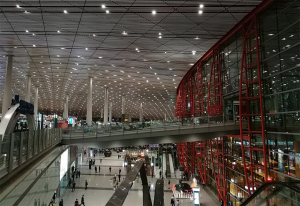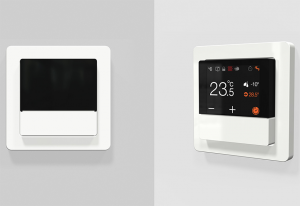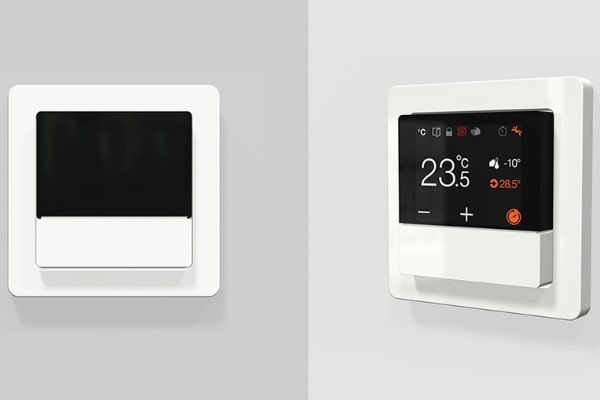KNX building management system introduction
What is KNX?
Today, smart homes and buildings are a growing term, and this includes KNX, a building automation system that started in Europe in 1990 and has since spread to every continent on earth. Whether in a detached house or an office complex, the need for convenience and versatility in the management of air conditioning, lighting and access control systems is growing, while energy efficiency is also becoming increasingly important. However, greater comfort and security with lower energy consumption can only be achieved through intelligent control and monitoring of the devices involved. This has led to a significant increase in the number of interconnecting cables from sensors and actuators to control and monitoring centres. Such a mass of wiring in turn means higher design and installation efforts, greater fire risk and high costs.
The answer to these challenges is KNX, the worldwide standard for controlling homes and buildings.
In order to transfer control data to all building management devices, a system is needed that eliminates the problems of isolated devices, ensuring that all components communicate with each other in a common language. KNX is a system that is vendor and application independent and the standard has more than 28 years of experience in the market. KNX was created in 2000 by merging the EIB, EHS and Batibus systems, but compatibility with previous devices has been maintained. Each device is able to exchange information via the KNX medium to which each bus subscriber is connected (twisted pair, radio frequency, network or IP/Ethernet). Bus devices can be sensors or actuators that are needed to control building management equipment. These include lighting, blinds/shutters, security systems, energy management, heating, ventilation and air conditioning. In addition, signalling and monitoring systems, interfaces to other services and other systems, remote control, metering, audio/video control, household appliances, etc. All these functions can be controlled, monitored and supervised through a single system without the need for extra control panels.
The KNX system in numbers
There are manufacturers on all continents of the world: currently, more than 500 manufacturers offer different products for the system and there are more than 8,000 KNX certified groups of devices to choose from, which are 100% compatible with each other. The system is used in all types of buildings, from small apartments to public buildings with a floor area of several hundred thousand square metres. From airports, such as Beijing International Airport (around 960 000 m2), to office buildings, such as Malaysia's tallest building currently under construction, the 635 m high and 400 000 m2 Merkeda 118. In Hungary, KNX has also been installed in many industrial halls, office buildings, schools, museums, hotels, agricultural buildings and residential buildings over the last 28 years.

What is the open standard?
KNX complies with and is based on the following standards: international (ISO/IEC 14543-3) and European (CENELEC EN 50090 and CEN EN 13321-1). In the case of the Chinese standard, it has been approved under GB/T 20965 and also complies with the American standard (ANSI/ASHRAE 135). The future of KNX is therefore on a solid foundation, guaranteed by the manufacturers behind it. The KNX products offered by the different manufacturers can be combined, each device being compatible with the others. The KNX logo guarantees that all devices can communicate with each other and work as a system.
Home and building surveillance equipment
Whatever the type of building, KNX opens up completely new possibilities for building automation systems, while keeping costs at a manageable level. KNX can provide solutions that can only be achieved with considerable effort and only partially with conventional techniques. It allows all applications in a home or building to be controlled from a single touch screen. KNX offers real benefits for architects, designers and contractors, but above all for building owners and users. Lighting and heating only switch on when needed. For example, depending on time profile and/or actual presence, saving energy and money. Lighting can be controlled in parallel with daylight intensity. This minimises the luminous flux in each workplace, thereby reducing energy consumption. Only the light sources that are really needed remain switched on.
A single system
Connecting all communication devices on a single bus significantly reduces design and installation time. A vendor-independent software, ETS, can be used to design KNX systems. It allows the system integrator to design and parameterise the system using devices from any manufacturer. It can also perform commissioning and subsequent modifications and debugging.
As the tool is vendor-independent, the system integrator is able to integrate products from different vendors, on different communication media, into a single system.
The KNX installation can be easily extended with new applications, and it is also easy to expand as new components can be easily connected to the existing bus system. This means that an already existing system can be expanded and modified at any time. New solutions that did not exist when the system was originally installed can also be used. This means that if someone installed a KNX system, say, 20 years ago, they can integrate today's state-of-the-art solutions and applications into their existing system. After all, one of the biggest advantages of KNX is that the latest devices can communicate with the earliest ones.


Read our other articles:
- Fairhair Alliance creates specifications
- IoT controller - what is it about?
- The Berker R.8 extra flat fitting range
- You can browse the huge range of the Berker switch family on our website Berker.hu.

